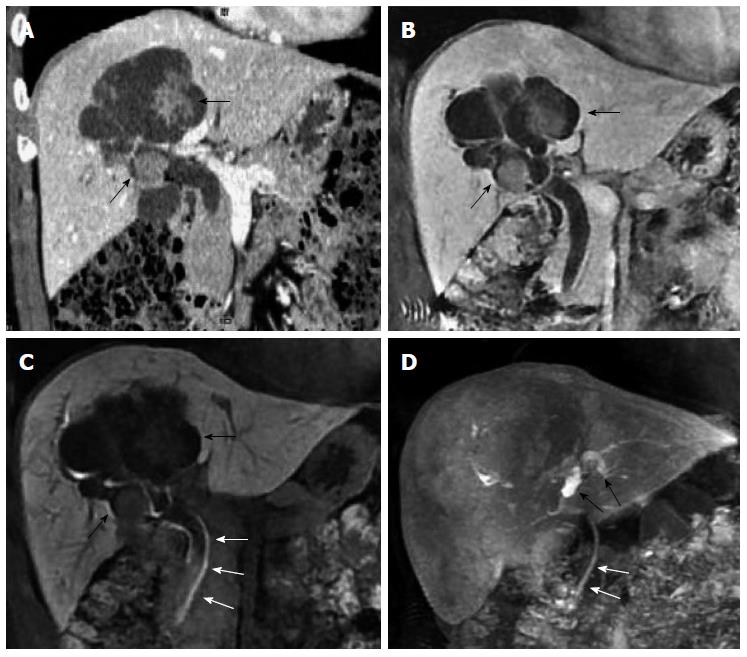Copyright
©The Author(s) 2015.
World J Gastroenterol. Jul 7, 2015; 21(25): 7824-7833
Published online Jul 7, 2015. doi: 10.3748/wjg.v21.i25.7824
Published online Jul 7, 2015. doi: 10.3748/wjg.v21.i25.7824
Figure 2 Fifty-two-year-old male patient with cystic intraductal papillary mucinous neoplasm of the bile duct (case 2).
A: Coronal image of contrast-enhanced computed tomography; B: Gadolinium-ethoxybenzyl-diethylenetriamine-pentaacetic acid-enhanced magnetic resonance imaging (Gd-EOB-DTPA-enhanced MRI) in the portal venous phase showed extensive biliary and aneurysmal dilatations of the right intrahepatic bile duct, with multiple significantly enhanced masses within the lumen (black arrows); C: Gd-EOB-DTPA-enhanced MRI also showed a contrast-filling defect within the common bile duct (white arrows), suggesting the presence of mucin; D: Multiple planar reconstruction of images acquired in the hepatobiliary phase showed a dilated left intrahepatic bile duct with good contrast filling (black arrows). The contrast filling was incomplete in the right intrahepatic and common bile ducts (white arrows).
- Citation: Ying SH, Teng XD, Wang ZM, Wang QD, Zhao YL, Chen F, Xiao WB. Gd-EOB-DTPA-enhanced magnetic resonance imaging for bile duct intraductal papillary mucinous neoplasms. World J Gastroenterol 2015; 21(25): 7824-7833
- URL: https://www.wjgnet.com/1007-9327/full/v21/i25/7824.htm
- DOI: https://dx.doi.org/10.3748/wjg.v21.i25.7824









